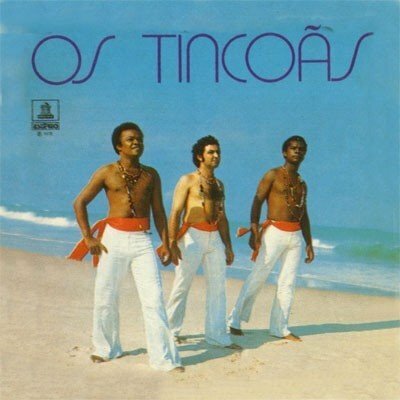
When Mateus Aleluia replaced Erivaldo and in 1963 joined fellow countrymen Heraldo and Dadinho in the group Os Tincoãs, he probably did not know that they would become a separate chapter in Brazilian music.
The trio began their journey in the early sixties in Cachoeira, in the Recôncavo Baiano, and playing boleros popular at the time, they recorded with the first lineup just one album, my last boleroreleased in 1962. They didn’t take off, Erivaldo decided to get on with his life and that’s where the real story of Os Tincoãs began.
Aleluia, now a 79-year-old man, arrived with his atabaque like the Ogã needed to make the tour go round, and a decade after his arrival the group released their second and eponymous album EMI-Odeon, and then we return to the first paragraph of this short text : there, in 1973, a new and inspired chapter in the history of Tupiniquim music was written.
The guitar and the delicate vocal harmonies were joined by percussion and all the African ancestry physically present in the Recôncavo region, which between the 17th and 18th centuries – a period of intense gold mining and sugarcane production – ‘received’ more of 40 thousand African slaves, who together with their pain brought the cultural wealth of Candomblé. Aruanda’s axé was incorporated into the musicality of Os Tincoãs, who after a long search in the local shacks and many hours listening and recording the singing of Dona Ledinha de Yansã (Zuleide da Paixão, Iyalorixá who sold acarajé in front of Dadinho’s bar) traveled to Rio de Janeiro and under the production of the then broadcaster Adelzon Alves, they crystallized in 12 songs the perfect mix between Africa and Brazil, praising the Orixás while making samba, sambando while playing songs by Xirê.
Then they would release two wonderful albums in 1975 and 1977 (which we will talk about in other days), but it was with The Tincoans who planted – alongside the woman-goddess Clara Nunes, it is necessary to emphasize – the seed that germinated in much of Brazilian samba from the 70s onwards, from Martinho da Vila to Originals do Samba and Zeca Pagodinho, lighting their wheels with the energy of the terreiros. And decades later, thanks to DJs, music researchers and the like, the Bahian trio emerged from specialized ghettos to finally be recognized as a revolutionary and cornerstone of Brazilian black music.
Essential!
Source: https://pequenosclassicosperdidos.com.br/2022/10/04/os-tincoas-os-tincoas-1973/


